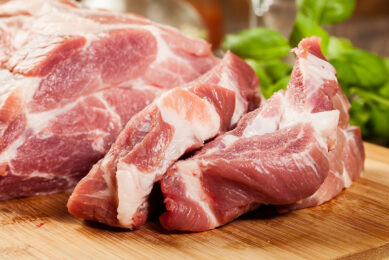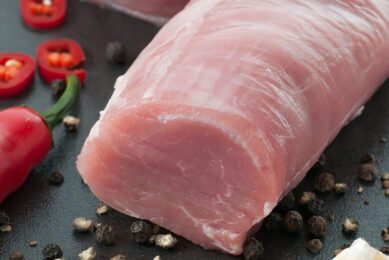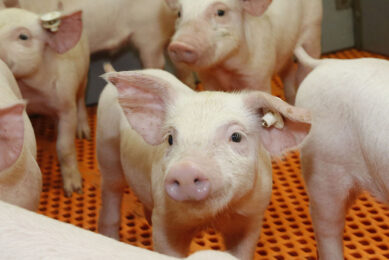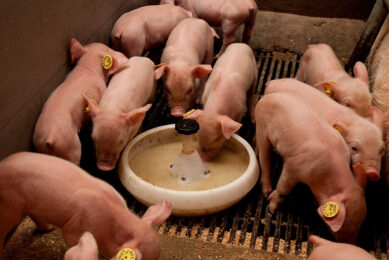BCAA requirements in lactating sows – Focusing valine
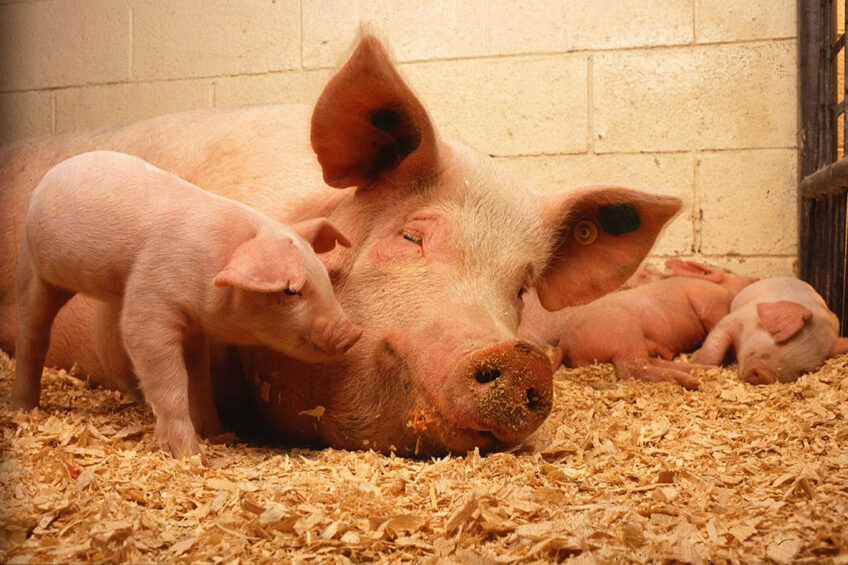
Although we know that a deficiency in branched-chain amino acids will decrease lactation performance, the exact requirements of sows are still debated. This article shall give an overview about the status of discussion.
Modern sows are leaner and have higher litter sizes than in the past, consequently amino acid requirements may change over the years. Valine (Val), Leucine (Leu) and Isoleucine (Ile) belong to the so called branched-chain amino acids (BCAAs). BCAAs account for about 30 % of the essential amino acids (AA) in the muscle, suggesting already their importance for protein synthesis. Due to their effects in milk protein synthesis and lactation performance in general, BCAAs are not only important for growth, but also for lactation. While Val is seen as fifth limiting in growing pigs, it is second- to third limiting in lactating sows.
A high milk yield with an adequate nutrient composition is crucial to ensure high growth rates and survival of suckling piglets. A deficiency in BCAA supply in sows, especially a lack in Valine, leads to a reduced milk yield and decreased weaning weights. Additionally, some studies show an increased weight loss of the sow during lactation, followed by an extended wean to oestrus interval.
Even though it´s well known that a lack in BCAA supply leads to reduced reproduction performance, the exact requirements of lactating sows are less clear, because the published requirements for BCAAs in lactating sows are a subject of strong variations.
General Metabolism of BCAAs
Unlike other AA, BCAAs are not primarily metabolised in the liver but in the muscle. Val, Leu, and Ile sharing a common metabolism because they get degraded by the same enzymatic system in a two-step process (Figure 1). BCAAs get degraded by the BCAA Transaminase (BCAT) and afterwards undergo oxidative decarboxylation reaction catalysed by BCKA dehydrogenase (BCKDH) complex. Thus, BCAAs in the diets need to be balanced. Especially a Leu oversupply may affect the requirement of Val and Ile because Leu act as a stimulator for the common enzyme system and consequently reduce the availability of Val and Ile in general. For the lactating sow it was confirmed that in the mammary tissue the Val uptake can be inhibited amongst others by high concentrations of leucine.
Figure 1- General metabolism of branched-chain amino acids.

BCAA metabolism in the mammary gland
BCAAs playing an important role in growth and development of mammary gland (Figure 2). A deficiency in BCAAs can be related with a decreased milk protein yield. The underlining mechanism for impaired milk protein yield may be the reduction of mTOR -mediated upregulation of eIF2Bε and eIF2α. In a rat model it was demonstrated, that the BCAA catabolism significant increase during the lactation period. BCKD activity in the mammy tissue was about 17-fold higher than in the non-lactating control group. Among the BCAAs, Val has the highest oxidation rate in the mammary tissue. Literature shows some evidence that the uptake of BCAAs by the mammary gland exceeds the corresponding output in milk protein, suggesting that these amino acids may additionally are important for the formation of other metabolites e. g. non-essential amino acids, lactose, or influence the lipid metabolism. It is known that higher amounts of glutamine and glutamate are contained in sow’s milk likely to support the development and function of the neonatal intestinal tract. Indeed, the output of glutamine in the milk is about 125 % higher than the uptake from the plasma. Because the mammary gland is lacking the necessary enzymes to convert arginine, ornithine, or proline to glutamine, it is likely that BCAAs are used alternatively.
Figure 2 – BCAA Metabolism in the mammary gland and its effect on milk protein in sows.

Requirements
Only a few studies are available about the optimal dietary valine-to-lysine ratio (Val:Lys) for lactating sows, but they demonstrate that supplementing lactation diets with BCAAs enhance milk yield and neonatal growth. Richert et al. 1997 and Moser et al. 2000 demonstrated a connection between an increased dietary valine content in sow diets, and increased litter weaning weights and litter weight gain. In a 2 x 2 x 2 factorial design Moser et al. 2000 showed that the enhanced piglet performance is specific for Valine and not for BCAAs in general: While litter weaning weight and litter weight gain increased with increasing dietary valine content, increasing amount of dietary isoleucine and leucine failed to improve sow or piglet performance.
The requirements of the major limiting amino acids are well understood. However, BCAA requirements for lactation are still disputed (Table 1). Unfortunately, several studies were done with sows weaning only a few numbers of piglets, so it is unclear if these data are really fitting the requirement of the modern sow. Strathe et al. 2016 tested increasing Val:Lys ratios in sows with above 12 piglets. The authors observed an increasing Valine and Isoleucine content in the milk, but couldn´t demonstrate a further increasing lactation performance with Val:Lys ratios above 84 (total basis; around SID Val:Lys 80).
Valine stimulates lactation performance and milk synthesis
Accumulated evidence suggests that a dietary supplementation of BCAA´s, and especially Valine, stimulate milk synthesis and enhance lactation performance. An improved litter weight gain seems to be mainly depending on Valine, rather than Ile and Leu. To optimise lactation and piglet performance, suggested ratios are SID Val:Lys 80, SID Ile:Lys 58 and SID Leu:Lys 112, respectively.
References available on request
Author: Dr Diana Siebert, CJ Europe



